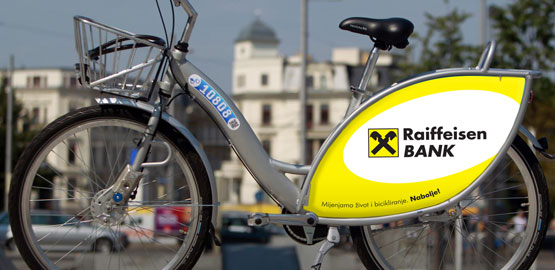Raiffeisen RESEARCH: Economy reaching its peak
02.10.2017
Raiffeisen RESEARCH, an organizational unit of Raiffeisen Bank International AG (RBI), published today the capital market strategy "Austria & CEE1" for the fourth quarter of 2017.
Vienna – Raiffeisen RESEARCH, an organizational unit of Vienna-based Raiffeisen Bank International AG (RBI), published today the capital market strategy "Austria & CEE1 " for the fourth quarter of 2017. The publication deals with, among other issues, the continual strong economic development in Austria and Central and Eastern Europe.
"History repeats itself. As in the first quarter, dynamics in the CE and most of the SEE economies accelerated again. One of key factors in the growth story in almost all of the countries in this region is private consumption, which is driven by vigorous employment growth and the related above-average increases in wages. In Romania and Hungary, nominal wages actually grew at double-digit rates in 2017. With little change in the savings ratio, private consumption will continue to be the key driver in the economic cycle in 2018", said Chief Analyst Peter Brezinschek.
Economies in CEE continually strong
For the third time in a row, the quarterly growth in Central Europe (CE) and Southeastern Europe (SEE) surpassed 1 per cent compared to the previous quarter. In yearly terms, the CE growth rate climbed to 4.0 per cent in the second quarter, and it reached 4.5 per cent in SEE. Seasonally adjusted quarterly growth in Russia and Ukraine doubled to 1 per cent and is expected to come in at 2.5 per cent p.a. for the whole year. Hence, overall quarterly growth for the CEE region surpassed 1 per cent, which is more than in any other quarter over the last two years. External support came from the euro area, where robust growth of 0.5 per cent qoq has been recorded over the last two years. Raiffeisen RESEARCH has therefore revised upwards the GDP-forecasts for 2017 and 2018 for some economies, e.g. Poland, the Czech Republic and also Romania, Bulgaria and Slovenia.
Inflation in CEE unchanged
Brezinschek does not see any need to change the projections for inflation. For the first time in the last three years, inflation rates are all in positive territory in 2017, but no major acceleration is expected in 2018. On average for the CE and SEE countries, inflation should be be between 2 per cent and 2.5 per cent next year. This is enough, however, for monetary policy to react in some cases. Raiffeisen RESEARCH expect to see monetary policy tightening and rate hikes in the Czech Republic, Romania, and finally in Poland. In Russia, the analysts project that inflation will settle in near the target of 4 per cent, allowing the Russian central bank adequate leeway for rate cuts until the summer of 2018. All in all, however, the ECB’s monetary policy will continue to keep a lid on interest rates in the EU countries, and outside of the euro area as well.
Austria: Economy in full swing
According to Brezinschek, the Austrian economy is currently in a very good shape. With real GDP growing at an average rate of 0.8 per cent qoq in the first and second quarters, business cycle dynamics in the first half of the year were as strong as seen last in the first half of 2011. Brezinschek: "In terms of GDP growth, Austria is currently a frontrunner in the euro area, although the present strong momentum should be viewed also as a catchup effect, considering the sluggish economic activity seen for the past several years. During the first half of the year, business cycle dynamics were driven by both domestic demand and foreign trade."
While private consumption grew at a slightly slower pace due to the fading effect of the tax reform that came into force in early 2016 and higher inflation, the growth rates can still be considered solid. Investment was also a supportive factor for business cycle dynamics, and the positive developments here were not limited merely to equipment investment, as construction investment also expanded tangibly during the first six months of 2017. Exports are enjoying tailwinds from the positive external demand conditions.
Austrian inflation increases markedly during the year
After hitting a preliminary high of 2.4 per cent yoy in February, inflation subsided and is currently running at 2.1 per cent yoy (in August), which is mainly due to oil price developments (significantly weaker increases compared to the previous year). By contrast, price dynamics for services remain high. Even though inflation (headline rate) is expected to continue weakening slightly, compared to 2016, an increase in inflation is anticipated for 2017 as a whole from 1.0 per cent to 2.0 per cent yoy. For both 2018 and 2019, the analysts of Raiffeisen RESEARCH project similar inflation dynamics at 2.1 per cent yoy, which should reflect the good economic conditions and in turn the increasing over-utilization of production capacities.
Economic outlook for Austria positive
The outlook at least for the coming months still appears to be positive. For instance, the purchasing managers’ index (PMI) for manufacturing came in at 61.1 points in August, hitting a cyclical high. "In view of strong business cycle dynamics in the first half of the year and the positive outlook for the second half of the year, we have raised our GDP forecast for 2017 from 2.2 to 2.8 per cent. The good economic conditions should continue until at least 2018, although compared to 2017 we already expect to see a lower growth rate of 2.2 per cent for the coming year (previously 1.7 per cent). GDP growth for 2017 and in the two following years should be broad-based. For 2019, we expect growth of 1.4 per cent,” says Brezinschek.
Equity markets – end of year expected to be positive
During the third quarter of 2017, almost all CEE equity markets covered by Raiffeisen RESEARCH posted significant outperformance compared to their counterparts in the established economies. While the US equity markets registered solid gains, including some new all-time highs (S&P 500), the established European equity markets took a breather and experienced a temporary setback. “In relation to monetary policy and liquidity, we currently expect a more gradual path of interest rate hikes in the USA, while a turnaround in monetary policy has still not even been announced yet in Europe. Considering the very good economic conditions, we expect sentiment on the international equity markets to remain positive beyond the turn of the year 2017/2018,” says Brezinschek.
ATX: clear outperformer 2017
The marked outperformance of the Austrian equity market compared to European and global indices continued to increase during the summer months. Having increased by 26 per cent since the beginning of the year, the Austrian leading index ATX remains among the equity indices developing strongest in 2017. The increase is markedly exceeding the performance of other leading European indices such as the EuroStoxx50 (plus 9 per cent), DAX (plus 11 per cent) or CAC40 (plus 9 per cent). The environment for equity markets is generally expected to remain friendly, and Raiffeisen RESEARCH forecasts the ATX to gain almost another 5 per cent to come in at 3,450 points by year-end. Per the analysts, the main driver is above all the economic development gaining dynamic in Austria, the rest of the euro area and in CEE. Against that backdrop, corporate profits are expected to increase significantly in the coming quarters. The ATX reduced its valuation discount compared to the European market during the strong upwards development of the past months. Its P/E ratio currently trades at 14.3 for 2017 and 13.3 for 2018.
Editor: Wolfgang Ernst, CEFA, RBI AG, Vienna, wolfgang.ernst@rbinternational.com
Cut-off for data: 21 September 2017
Completed: 28/09/2017, 3:21 PM CEST
First dissemination: 2 October 2017, 10:00 AM CEST
Completed in German language: 26/09/2017, 10:17 AM CEST
First dissemination in German language: 02/10/2017, 10:00 AM CEST
A full version of the strategy publication can be ordered from:
aleksandra.srejic@rbinternational.com.
1Central and Eastern Europe (CEE) is composed of the regions of Central Europe (CE) with the Czech Republic, Poland, Slovakia, Slovenia and Hungary, Southeastern Europe (SEE) is composed of Albania, Bosnia and Herzegovina, Bulgaria, Croatia, Romania and Serbia as well as the region Eastern Europe (EE) with Belarus, Russia and Ukraine.



